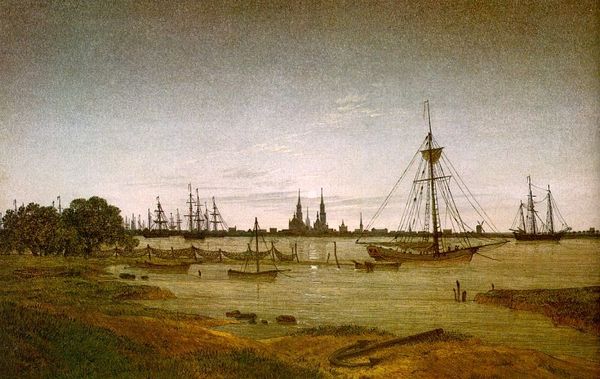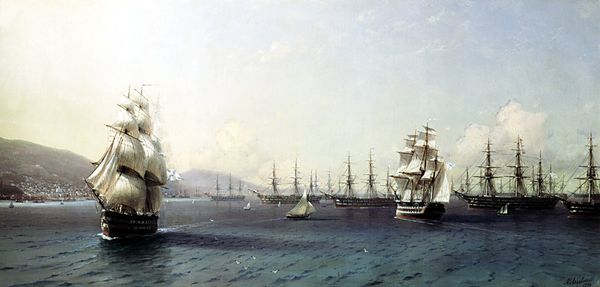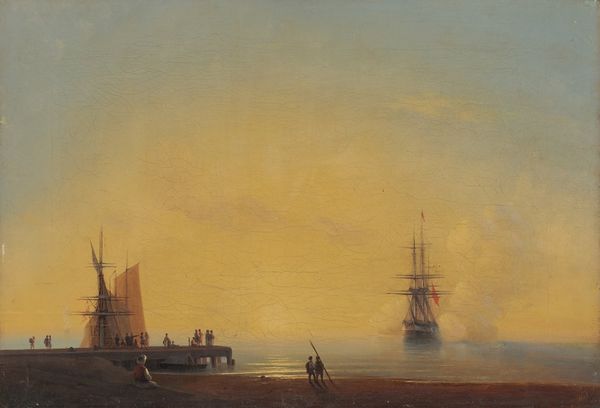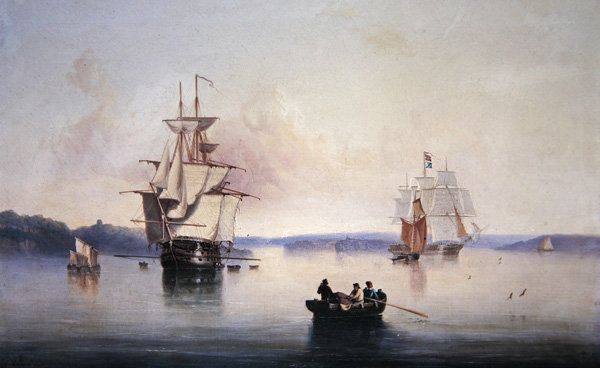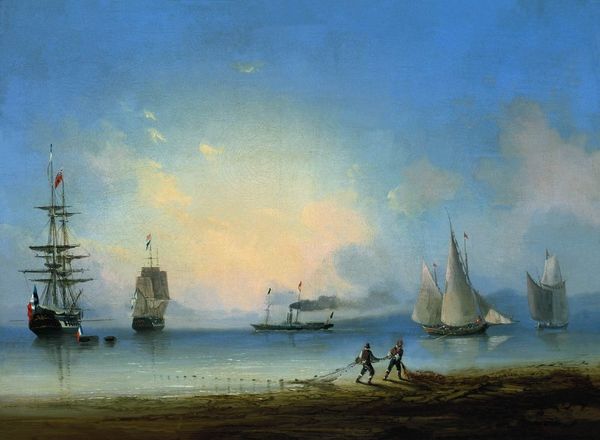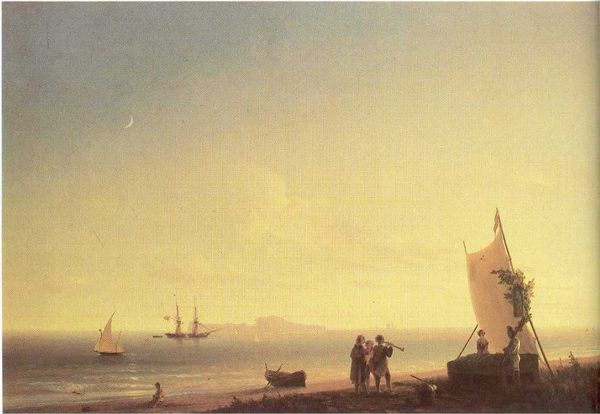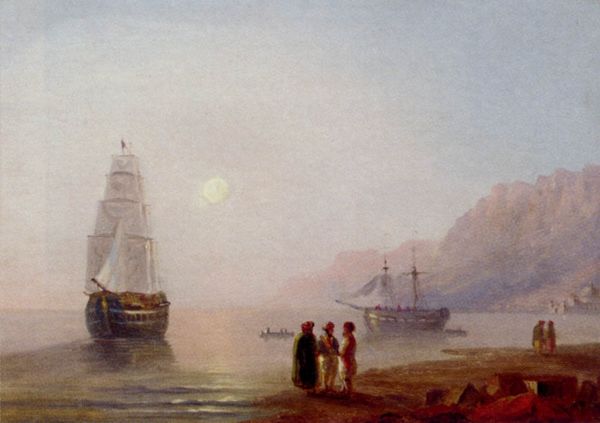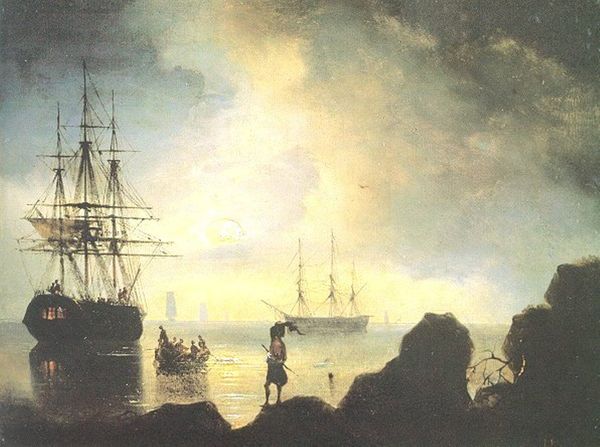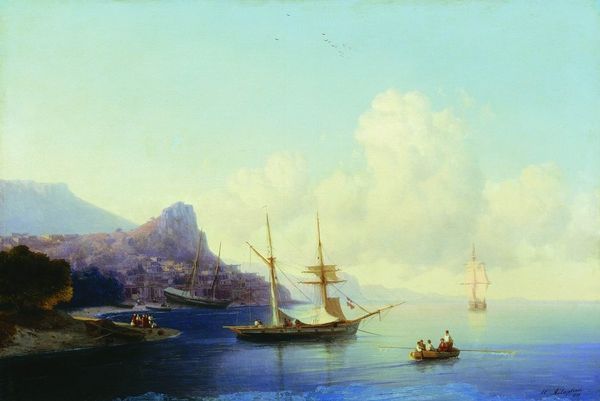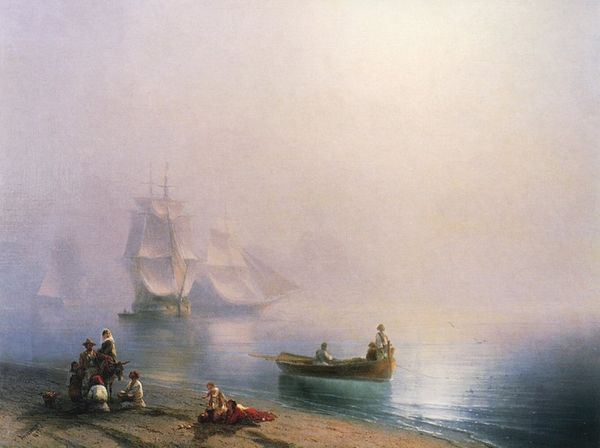
Dimensions: 29 x 43 cm
Copyright: Public domain
Editor: We're looking at Ivan Aivazovsky's "Seashore," created in 1861. It seems to be a drawing, maybe pencil and charcoal on paper. The overall tone is muted and atmospheric, almost dreamlike. There's this immense sense of calm, yet with these figures on the beach, and a ship on the water, a hint of anticipation as well. What draws your eye in this piece? Curator: The first thing that strikes me is the light, or rather, the *sense* of light. Aivazovsky, master of the marine, wasn't just depicting the sea; he was painting light itself, wasn't he? It’s almost as though he scooped up the sunrise in a net and transferred it to the page. The misty haze, almost blinding… he uses that tonal range beautifully. What do you feel about the horizon line? Editor: I notice it’s very low, emphasizing the sky. I wonder if that’s symbolic, elevating something beyond human reach? Curator: Precisely! That Romantic yearning, the sublime feeling when confronted with the vastness of nature… He makes the humans appear rather small and insignificant, doesn't he? Like players on a giant stage. They're present, yes, but completely immersed and humbled by their environment, right? It's a delicate dance, showing man’s connection to the sea but not presuming to dominate it. There's an acceptance here. It asks us, "What is our place?" I always think this with his work. What does that invite in *you*? Editor: I see what you mean about being "immersed and humbled". Now, compared to some of his paintings with grand dramatic seascapes, this feels more… contemplative. I hadn't picked that up before, so thank you for that new perspective. Curator: You're most welcome! To contemplate it just asks for something, doesn’t it? Doesn't it really?
Comments
No comments
Be the first to comment and join the conversation on the ultimate creative platform.
